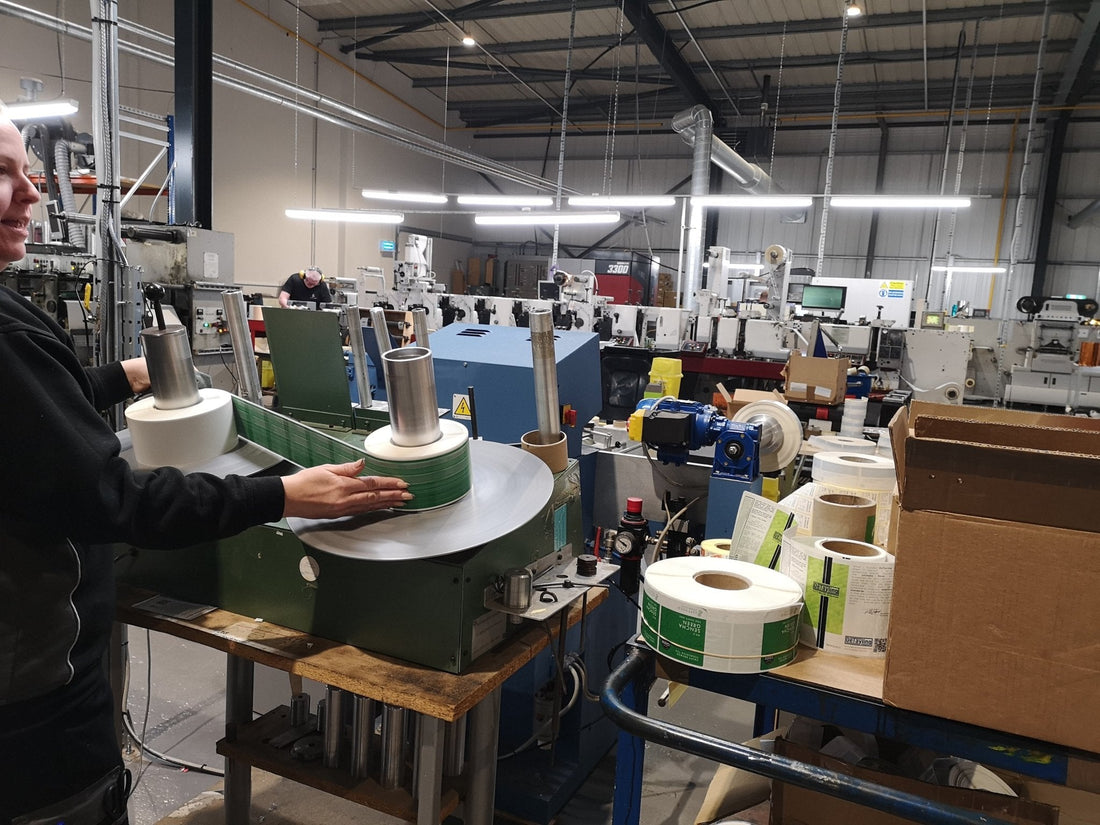
7. The Bottling Process of Kombucha: From Cold-Crashing to the Final Sip
If you’ve ever wondered how kombucha goes from a bubbling fermentation vessel to the refreshing bottle you crack open, you’re not alone. The bottling process is crucial to ensuring that each batch is consistent, safe to drink, and bursting with flavour. It's a delicate balance of halting fermentation at just the right moment, preventing unwanted microbial growth, and preserving the goodness of the bacteria and acids that make kombucha so special.
In this post, we’ll break down the key steps of the kombucha bottling process, from fermentation stasis to final packaging. Here's how we bottle our kombucha to ensure every bottle is as flavourful and balanced as possible.
Cold-Crashing to Halt Fermentation
The journey from brewed tea to bottled kombucha begins with cold-crashing. Once the kombucha has met its final taste and testing requirements, we transfer it into Arlington containers, which are large holding vessels. This is when we stop the fermentation process to prevent further yeast and bacteria activity.
By lowering the temperature, we effectively "stun" the fermentation process, halting the activity of the yeast and bacteria that are responsible for the kombucha’s distinctive tangy flavour. This process ensures that the kombucha will have a consistent flavour profile once bottled, preventing the brew from becoming overly sour.
Transport to Local Contract Bottlers
Once the kombucha is cold-crashed and ready for bottling, the Arlington containers are shipped to our trusted local bottlers. These bottlers handle the final steps of the process, taking the kombucha and turning it into the ready-to-drink beverage you’ll find on the shelf.
Along with the kombucha, the bottlers receive the corresponding labels, ensuring each batch is appropriately tracked and labeled.
Non-Sterile Filtration for Stability
At the bottling facility, the kombucha undergoes rough/non-sterile filtration. This selective filtration removes the larger yeast cells and any sediment that may have formed during fermentation. The goal here is to control the fermentation process further by reducing the yeast population that could continue to ferment the kombucha once bottled.
This step is crucial for slowing down secondary fermentation, which can lead to kombucha becoming too carbonated or too sour. By reducing the yeast population, we help maintain a stable, balanced flavour over time while allowing the beneficial bacteria to remain intact. Essentially, we’re halting the fermentation chain in its tracks, creating a kombucha that will stay refreshing without becoming overly acidic.
Dropping the Temperature to Just Above Freezing
After filtration, the kombucha is moved into a tank, where its temperature is lowered just above freezing. This chilling process helps to maintain the liquid stability during bottling while also ensuring that the flavour, carbonation, and bacteria are preserved.
Once the kombucha reaches this temperature, the bottling team gradually brings it back up to the optimal level for carbonation.
Purging Bottles with CO2
Next, the bottles are prepped for filling. Each bottle is purged with CO2 to remove any oxygen. This is a key step in ensuring that no oxygen remains in the bottle, which could otherwise promote the growth and activity of any aerobic bacteria or yeast.
Oxygen in kombucha can cause unwanted fermentation or spoilage, so purging with CO2 ensures that the brew remains safe and stable. It also helps preserve the fresh, vibrant taste of the kombucha.
Bottling in Brown Glass
When it comes to packaging, we opt for brown glass bottles. Why? Light, especially UV light, can degrade the quality of kombucha over time, causing it to become stale or lose its vibrant colour and taste. Brown glass helps protect the kombucha from UV light exposure, preserving the flavour and preventing any light interference that could alter the brew.
Filling, Capping, and Labelling
Now that the bottles are prepped and ready, they’re filled with kombucha, capped, and labelled. During this step, the kombucha is carefully poured into each bottle, ensuring the right fill level for proper sealing and carbonation. Each bottle is also labelled and dated with batch information, so you can trace back the specific details of your kombucha.
Packing and Returning to Us
After the kombucha is bottled and capped, it is packed into cardboard boxes, sealed with paper tape. The boxes are then returned to our warehouse for storage, and the kombucha is ready for distribution to our customers.
Using cardboard and paper tape ensures that our packaging is as sustainable as possible, reflecting our commitment to reducing environmental impact throughout the entire kombucha production process.
The bottling process is far from simple—it’s a precise series of steps designed to preserve the quality, flavour, and benefits of the kombucha while preventing over-fermentation and spoilage.
